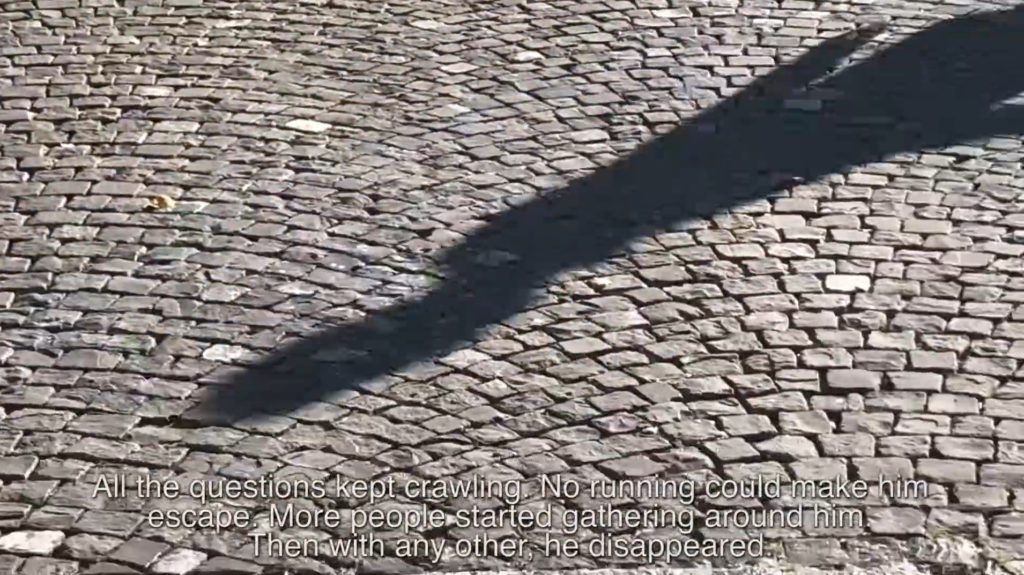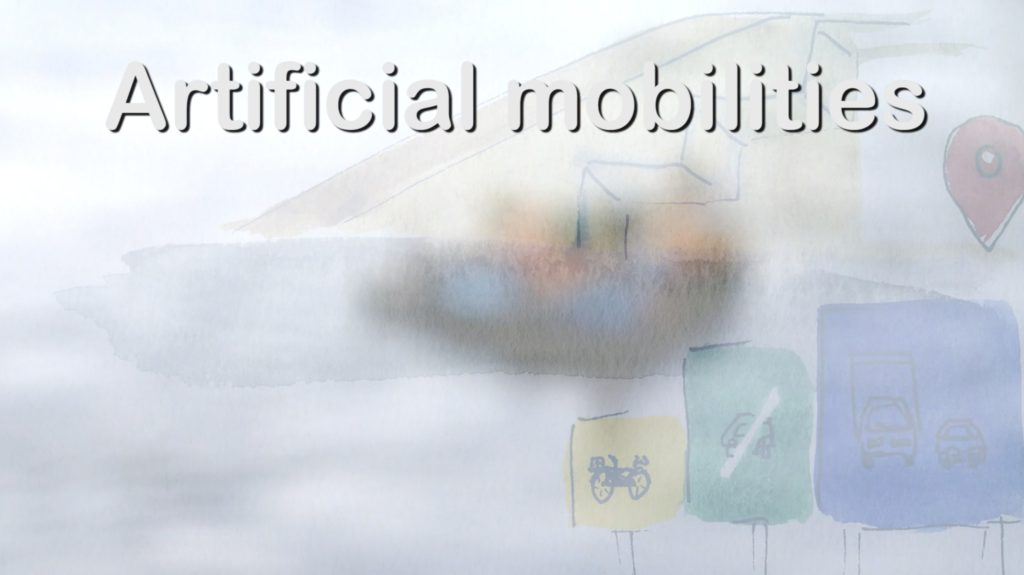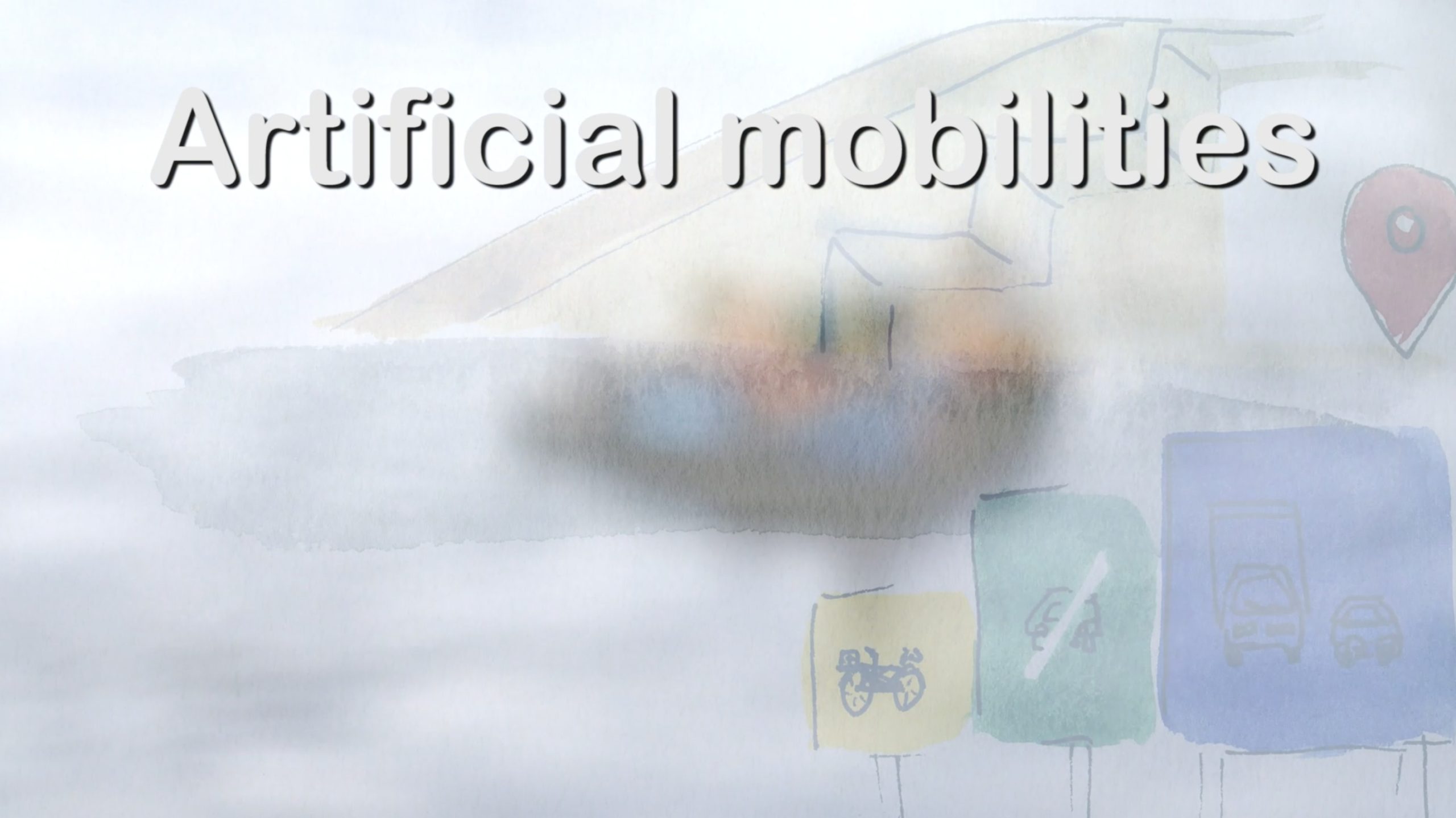In the fall of 2019, Yris Apsit, Tillo Spreng and I got together and developed a ‘game’ of sorts, that was predicated on the concept of the exquisite corpse, where an artist would begin a piece, and then subsequent artists would add sections to the work, resulting in a completed work. A main component of our game was how information was received (and given), transformed and then given to another person. Further, the work we constructed was interested in questions on the ‘lossiness’ of translation given the reality of no extant metalanguage. This effect is amplified when translating between different artistic media.
To achieve this goal, we took the earlier mentioned idea of the exquisite corpse a step further, by creating a multi-media work whose added-segment order would be carried through each possible permutation of the three participants (i.e Tillo-Yris-Eric, or Eric-Yris-Tillo). Because there were three participants, there were six possible permutations of the order in which the participants’ segments could be added. The game’s rules were as follows 1) An artist would record some part of a collocal space through their background medium for ten minutes, resulting in one minute’s worth of documentation (e.g. Tillo would have ten minutes to choose shots and shoot film resulting in a minute of footage). 2) The artist would then send the last segment of their documentation to the next artist (e.g. Yris would send the last clause of what she wrote, or last few coherent words to Eric). 3) The resulting ‘chain’ would be assembled together, as a single, subtitled film with recorded audio. Because there are six different ordering configurations for the passing of media, we created six different exquisite corpses. 4) The six minute-long exquisite corpses were uploaded to youtube as a playlist and could be set to be played back in random orders, resulting 720 different possible six minute videos that represent the essence of the space. In this particular case, that was Helvitiaplatz in Zürich and through our own experiences and capture, we mapped a moment and a space.

After working through this process once, the group applied for and won the ZHdK-AVINA Stiftung Projektfonds to conduct a broader project across Switzerland that has unfortunately been put on hold, and I have posted about already on this site. However, this past summer Yris and I were able to take part in the Eco Art Lab at NEA Summer School: Climate and the city (I also already posted a little bit about it, but not the outcome). Unfortunately, Tillo couldn’t join us at this workshop because he was having his first kid! Nevertheless, the workshop was geared towards pairing artists with environmental scientists to “jointly develop new formats of knowledge production through artistic research and transdisciplinary perspectives.” This was appealing to Yris and I, because we thought it would give us a chance to think through and gain new perspectives on our project as it relates to the Hyperobject we wanted to address in the AVINA funded project we would ultimately conduct with Tillo.
At the Eco Art Lab, we ended up working with two excellent artists, Soraya Thashima Rutschmann, who often works in visual and conceptual mediums and Nina Calderone, an animator and film maker. For this collaboration, Soraya painted in watercolors and Nina shot film, with Soraya’s paintings adding an extra medial layer to the composite work. We also reconfigured the project in an interesting way. Because we had four people instead of three, we would have had to do 24 iterations of ordering if we did the permutational ordering as Tillo, Yris and I had done before. Considering the amount of time we had to work, this would have been impossible. Instead, we did a tree-like passing (rhizomes anyone?), where each person got to act as a seed. After producing/recording this initial unit, we would then send the last section of our media—or in Soraya’s case, a crop of the image—to the rest of the group, at which point the rest would work in parallel. Another significant difference between this run of the project and the initial one, was that we were not collocated in this project, instead we worked individually in separate locations of our own choosing.

One sequence, then, would result in four composite clips. However, we did three iterations of the project this time, since we had decided to do a full run of this new rule set based on each of the three areas that are commonly thought of as critical to addressing anthropogenic climate change: nutrition, mobility and habitation. Therefore, we ended up with twelve one-minute clips, which results in 12! (479,001,600) possible orderings.

After creating Climate Exquis, there were a few interesting things that I am noticing about the rule set that produces the work. First, the work is very transdisciplinary. However, in certain regards all the parts get subsumed under the artistic domain of film—obviously because film often folds multiple forms of media into itself and the ultimate work is presented as a film. Second, the project that results from these rules, whether in the original format or in this latest iteration tend to be quite coherent, even with so much information lost upon transference and, in the case of Climate Exquis, even when we are no longer in the same space/place. The resiliency of the ruleset, even when shifting topicality, location and personnel is quite impressive. Finally, I am noticing that it is easy for the recordings I create to be too similar, or that I insert my voice too often into the sonic narrative. I worked quite a bit on the technical aspect of recording over elements I had already recorded, which is quite fun and interesting. I do believe that I need to turn my documentation device’s (my cell phone) attention to more various kinds of sounds—although I feel that there are limitations that are outside my control, since the quality of the microphone is so low. To me, it seems like this rule set is an excellent way to produce something coherent and interesting quickly—although perhaps if I am being critical (or self-conscious?) of the result, there may also be a ceiling since editing and revision is banned outside of the ‘working period’.
